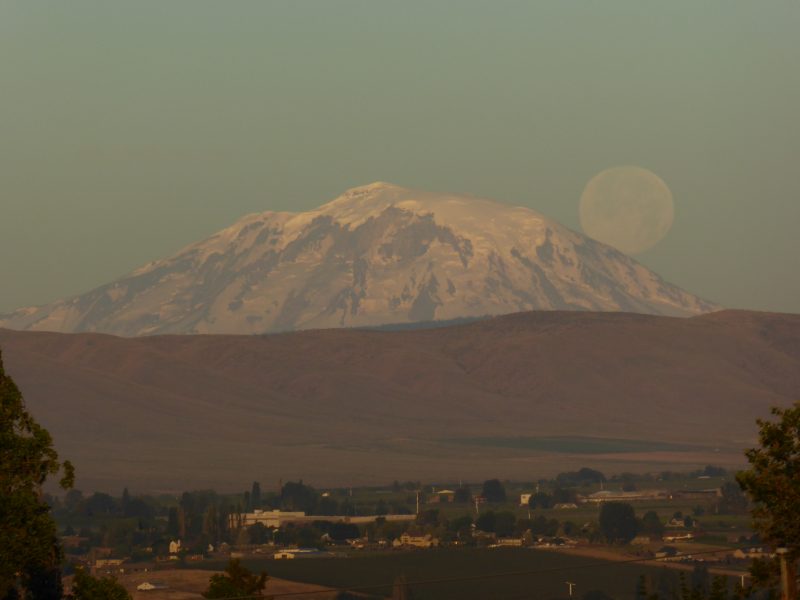Photo above: Morning moon caught by Peter Lowenstein in January of 2017, from Mutare, Zimbabwe
Starting around January 12 or 13, 2020, look westward after sunrise to see a daytime moon. Then watch for the daytime moon all this upcoming week. You’ll be looking low in the west after sunup, when the moon is about to set. Click here for a sky almanac telling you the moon’s rising and setting times in your sky.
Why can you see the moon in the daytime now? The full moon – and penumbral lunar eclipse – happened Friday night and Saturday morning (January 10-11, 2020). That means the moon is now in a waning gibbous phase, rising after nightfall and setting in a westward direction after sunrise.
EarthSky lunar calendars are cool! They make great gifts. Order now. Going fast!

If you look for the moon at the same time every morning, you’ll see this week’s waning moon appearing higher and higher in the western sky each morning, all week long. To understand why, think about where the sun is in early morning. Day by day, the moon is moving eastward (toward sunrise) in its orbit around Earth, waning toward new moon.
By January 17, the moon will be at the last quarter phase – rising around midnight and southward around dawn (or from the Southern Hemisphere: high overhead or northward around sunrise).Then the moon will turn new on January 24. It’ll be rising and setting with the sun at new moon, giving us deliciously dark skies for stargazing.
People love to see the daytime moon. They wonder about it, and ask about it. Once, a reader in Kansas City wrote in with the name children’s moon to describe a moon visible during the day. She said this name stemmed from the idea that children can’t stay up at night late enough to see the moon when it appears only in darkness.
That story prompted another reader to send in an alternate version for the origin of the name children’s moon. She wrote:
I heard a daytime moon was called a ‘children’s moon’ because their eyes were sharp enough to pick it out, where the old folks, with fading vision, could not tell it from the clouds.
Can you see the daytime moon in the next few mornings?

Bottom line: In the days after every full moon, the moon appears in the west after sunrise, in a blue sky. Watch for it.











